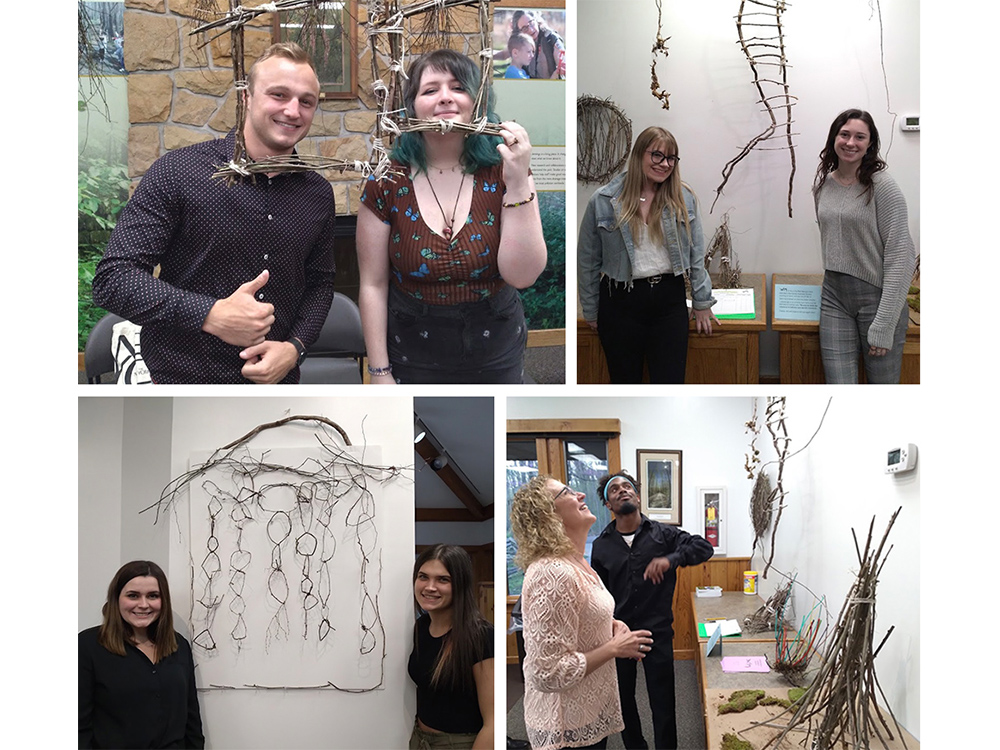Posted on Wednesday, June 22, 2022
 Multiflora rose tends to be a climbing shrub many homeowners try to eliminate from their gardens, but students at Westminster College found a different use for the invasive plant as part of their Environmental Studio cluster course this spring.
Multiflora rose tends to be a climbing shrub many homeowners try to eliminate from their gardens, but students at Westminster College found a different use for the invasive plant as part of their Environmental Studio cluster course this spring.
Responding to the physical and visual properties of the invasive species, students crafted sculptural forms from segments of the plant that had been extracted as part of a service learning project done in collaboration with Jennings Environmental Education Center in Slippery Rock, Pa. The center displayed the students’ multiflora rose sculptures throughout the month of May.
“The sculptures created by the students were certainly a creative conversation starter for our visitors related to the issue of invasive plants,” said Wil Taylor, center manager at Jennings. “Those discussions pivoted to how we manage invasive species at the park and how the public can identify and manage those species on their property.”
Student collaborative work with Jennings also involved a scientific study of invasive species in different regions of the park by doing a quadrat study to compare what regions had been chemically treated, manually extracted and which had no treatment done at all. A poster of these findings was also on display at Jennings.
Westminster’s Environmental Studio cluster course combined the art class Sculpture and Science, taught by Summer Zickefoose, assistant professor of art, and the environmental science course Project-Based Environmental Science, taught by Dr. Helen Boylan, professor of chemistry, with a goal of collaborating on real-world projects at the interface of art and the environment.
In addition to the exhibit of their work at Jennings, students gave an oral presentation about their work during the Bartramian Audubon Society Awards Ceremony on May 9 at Jennings.
At Westminster College, cluster courses consist of two linked courses taught by two faculty members from different disciplines to the same group of students in the same semester. Clusters offer opportunities for students to integrate knowledge and to develop into a community of learners.